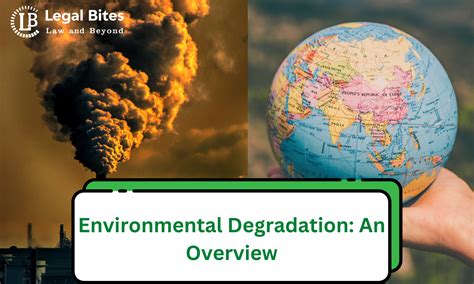Environmental Degradation: A Global Crisis

Environmental degradation, the deterioration of Earth’s ecosystems, has emerged as a significant concern in recent decades. Human activities, such as deforestation, pollution, and climate change, have had a devastating impact on the planet’s natural resources, biodiversity, and human well-being.
The Causes of Environmental Degradation
- Deforestation: The clearing of forests for agriculture, urbanization, and other purposes has contributed to the loss of biodiversity, soil erosion, and climate change.
- Pollution: The discharge of harmful substances into the environment through industrial processes, transportation, and waste disposal contaminates air, water, and land, posing health risks to humans and ecosystems.
- Climate Change: The release of greenhouse gases from burning fossil fuels and deforestation has led to a rise in global temperatures, resulting in extreme weather events, sea-level rise, and ocean acidification.
The Consequences of Environmental Degradation
Environmental degradation poses severe threats to human societies and ecosystems:
- Biodiversity Loss: Habitat destruction and pollution have led to a decline in species diversity, threatening the genetic resources and ecosystem services essential for human survival.
- Food Security: Degraded ecosystems reduce agricultural productivity, leading to food shortages and malnutrition.
- Water Scarcity: Climate change and pollution have caused disruptions in water cycles, resulting in water shortages and conflicts between communities.
- Health Problems: Air and water pollution cause respiratory and cardiovascular diseases, as well as other health issues.
- Economic Impacts: Environmental degradation disrupts economic activities, such as tourism and agriculture, and reduces the value of natural resources.
The Significance of Environmental Degradation in AP World History
In AP World History, environmental degradation is recognized as a major factor shaping human societies and the course of history. It has influenced:
- Demographic Changes: Disease outbreaks and famines caused by environmental degradation have affected population growth and distribution.
- Political and Economic Systems: The scarcity of resources due to degradation has led to conflicts and competition for access to land and water.
- Cultural and Technological Developments: The search for solutions to environmental problems has spurred technological innovations and cultural adaptations.
- Global Interdependence: The interconnectedness of ecosystems highlights the need for international cooperation to address environmental issues.
Addressing Environmental Degradation
Recognizing the urgency of the environmental crisis, global efforts are underway to address environmental degradation:
- International Agreements: The Paris Agreement aims to limit climate change, while the Convention on Biological Diversity promotes biodiversity conservation.
- National Policies: Governments implement regulations, incentives, and conservation programs to reduce pollution and protect ecosystems.
- Technological Advancements: Innovations in renewable energy, sustainable agriculture, and waste management offer solutions to environmental challenges.
- Public Awareness and Education: Raising awareness about environmental issues empowers individuals and communities to make informed choices and advocate for change.
Conclusion
Environmental degradation poses a significant challenge to human societies and the sustainability of Earth’s ecosystems. By understanding its causes and consequences, we can develop effective strategies to mitigate its impacts and ensure the well-being of future generations.
